Proven Ways for Creating the Perfect B2B Email Marketing Strategy

Building a strong B2B Email marketing strategy lies at the foundation of any successful B2B business. Still, so many businesses waste opportunities to increase conversions just because they don’t have a sound email marketing strategy in place. In a 2019 survey, 11.2% of marketers considered a lack of a good strategy as one of the main challenges of email marketing.
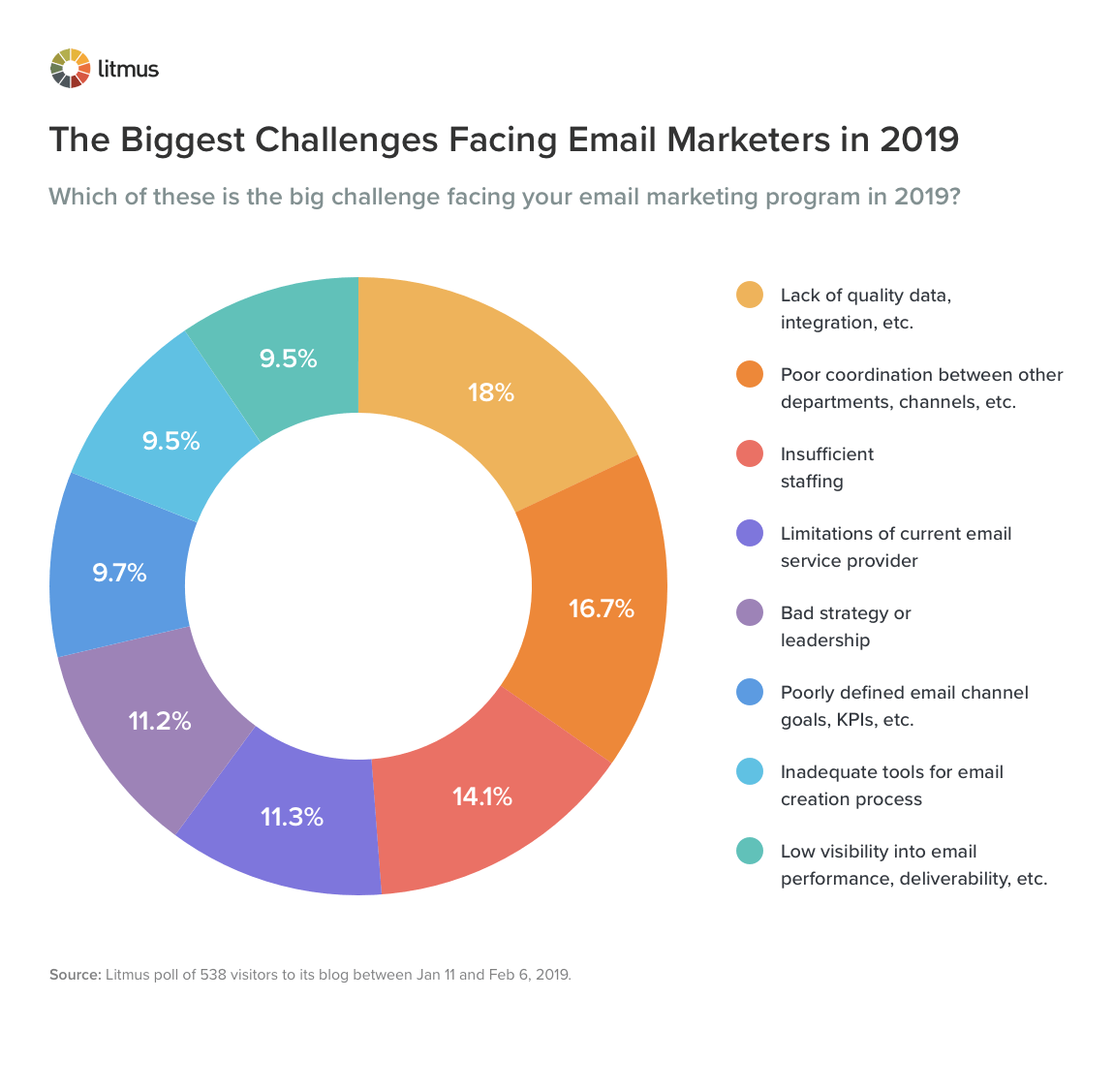
Image Source
That said, creating a well-thought-out email marketing plan is a must for every business. You can’t adopt a random approach and expect to see results. If you are designing your next email marketing campaign, we’ve put together a list of the key action points that you need to pay attention to when creating an effective email marketing strategy.
1. Do your Research
Email marketing is proven to bring great results for marketers, but it is not good to assume that if a certain strategy worked for a business, it would work for your business too. Email marketing is evolving with time, and new techniques are emerging from time to time to improve email marketing results. Therefore, doing your homework before creating your email marketing strategy is absolutely important.
Here’s what your email marketing research should include:
- Your primary objectives of email marketing.
- Your most critical challenges.
- Your estimated budget and factors affecting the cost.
- The company and people you are engaging with.
- Your prospect’s role within the company.
All this research will help you increase engagement and brand awareness, which is one of the main marketing objectives for 67% and 59% of marketers.
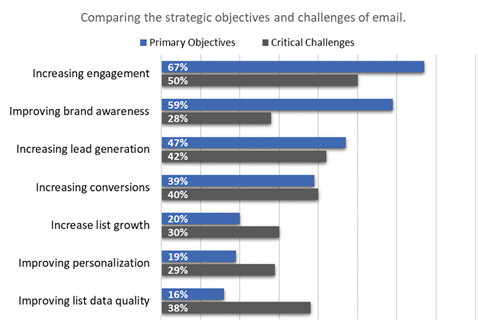
Image Source
If, however, you jump right in without chalking out a strategy for your email marketing, your email content is highly unlikely to resonate with your customers or hit their pain point.
2. Determine your value proposition
Any marketing strategy derives its strength from a company’s value proposition, which consists of its main strengths and differentiators against competitors.
Determining your value proposition is the step to which you should devote your maximum time as it’s one of the most crucial conversion factors, which could make the difference between closing a deal and losing it. Below are the key steps you can follow to determine what your company can offer to the customers:
- Identify the main customer benefits.
- Determine what value your products/services bring to the customer.
- Also, determine how your product/service is different from the competitors.
Your value proposition should be direct, to the point, clear, and be able to solve customers’ problems.
3. Get to know your customers
In order to fulfill your buyers’ needs and solve their problems through your products/services, it is very important to fully understand them.
According to John Parker, Vice president -Marketing for sales data LLC
“To be successful with your email marketing, it’s pertinent that you align your marketing messages with the needs and pain points of your most valuable customers.”
In today’s modern marketing world, marketers rely less on traditional market research methods such as focus groups or surveys and use modern platforms and tools that reveal a lot about their customers’ demographics, online behaviors, and conversations. Here are some ways to get a better pulse on your B2B customers:
- Understand every call and text from customers to gain insights on what customers are looking for, where the knowledge gaps are, and how their experience has been with your product or service.
- Know what the buyers are looking for on your site. You can use Google Analytics for this purpose. Here’s how you do it:
log in, go to Reporting -> Behavior -> Site Search -> Overview. Here’s what it will look like:

Image Source
Google Analytics gives you access to massive amounts of data and the best part is – it’s free to use!
- Provide a medium for your customers to voice their opinions. For this purpose, you can add a commenting box on your company blog, allow commenting on FAQs and your social media.
- Chat and surveying tools can also help collect ongoing data points.
It’s important to provide multiple mediums for capturing customer feedback. Besides that, interviewing your customers directly on a regular basis is very important.
4. Define your buyer personas
Buyer personas are semi-fictitious and generalized representations of your ideal customers. A detailed B2B buyer persona will help you identify how and where to engage with your ideal customers and better understand and get closer to them.
Your B2B buyer persona will generally have:
- Job title of your ideal buyer
- Ideal demographic information.
- Information about the ideal companies you would like to target.
- Pain points of your target customers and why they would be interested in buying your products or services.
- Where do they mostly spend their time? It could be meetups, social media groups, or certain websites.
For creating buyer personas, marketers gather insight from different platforms such as social media channels, web analytics, customer reviews as well as actual conversations with customers and prospects.
By defining your buyer personas, you can get several benefits, such as:
- Improve your entire sales funnel.
- Find your best customers easily.
- Create targeted lists of prospects.
- Improved productivity of your sales team.
- More closed deals
5. Segment Emails the B2B Way
When approaching the B2B sector with email marketing, you must remember that there is more than one person involved in the decision-making process. The group of people involved in the decision-making process forms the DMU or the Decision Making Unit.
When crafting content for your email messages, you must create it from each person’s perspective in the DMU because each will view your emails from their perspective. That’s where email list segmentation plays an important role.
Using email list segmentation, you will be able to segment the executives into different groups based on their job title, seniority level, priorities, etc., which will help you create tailor-made or personalized email messages for them. As different decision-makers have different priorities and concerns to deal with, by addressing the pain or pressure points concerning the decision-maker you are targeting, you will be able to get more engagement and long-term results.
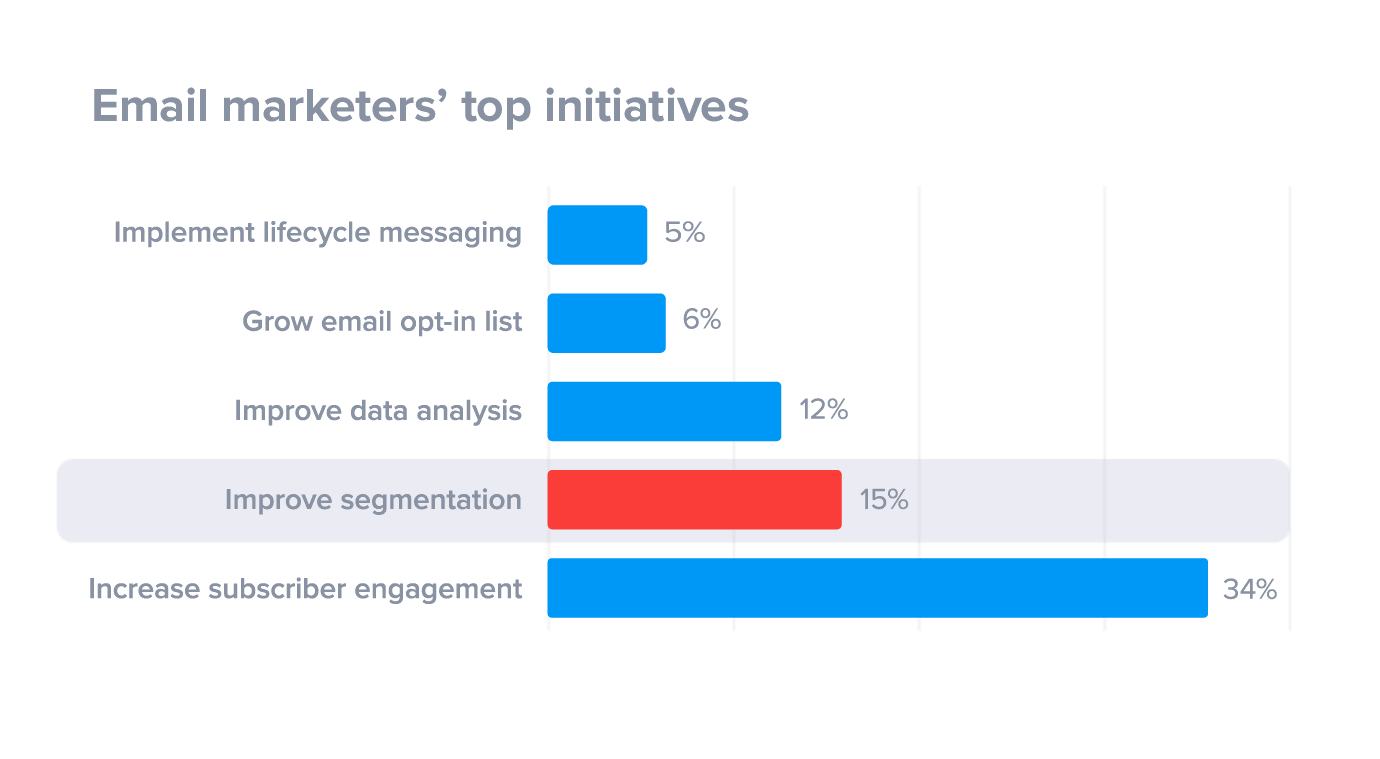
Image Source
So before you send emails, spend some time segmenting and targeting your buyers by gathering the required data about each important person in the company beforehand.
6. Send multiples emails at the right time.
B2B purchases often require larger investments as compared to B2C so that the buyers won’t buy your product or service on impulse. As a B2B email marketer, you will have to send multiple emails with the appropriate message at the right time to make a favorable impression on your prospects or customers and educate them more with each step.
Your B2B email should be spread intelligently over a long period of time, depending on the customer lifecycle.
A typical customer lifecycle includes the following stages:
Prospect Stage: Prospects refer to businesses that aren’t your customers yet. They match your ideal buyer persona and have had a few interactions with you. You want to encourage them to buy more by incentivizing them. At this stage, a good welcome email with something of value will help you make the first impression right. In this welcome email, Dean immediately offers his list value just for opening his B2B welcome email.
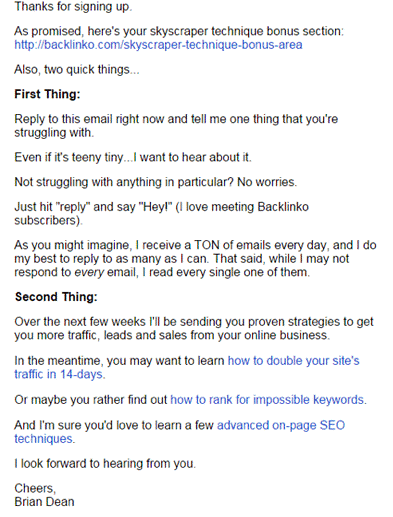
Image Source
Active Customer Stage: At this stage, your customer has already purchased your product or service. You have to keep these customers engaged, so they continue buying from you so you would send them transactional emails. Transactional emails have a 2-5x higher ROI than promotional emails. This order confirmation email is a type of transactional email from Hauser that is simple, sleek, and to the point.
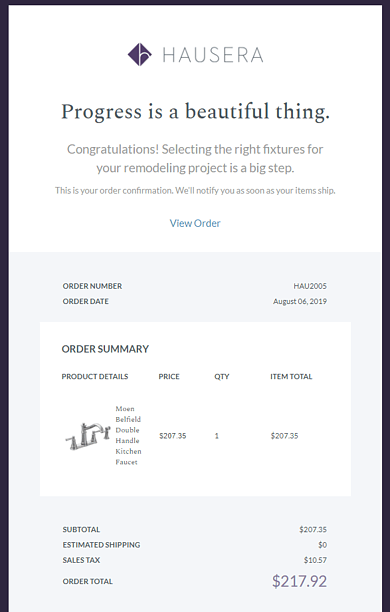
At-Risk Customers: These are the customers who were once very active, but their interest in your company has dwindled over time. To bring back such customers, you must segment based on their past interactions with your brand and deliver tailored content to each segment.
Lapsed customers: These are the customers that you’ve lost to the point that they don’t even open your emails. Should you straightaway remove such customers from your email list? No, because you still have a chance to ‘win them back with the help of win-back emails. This win-back email from Starbucks not just lets the customer know they matter but also includes an offer to entice them to come back.
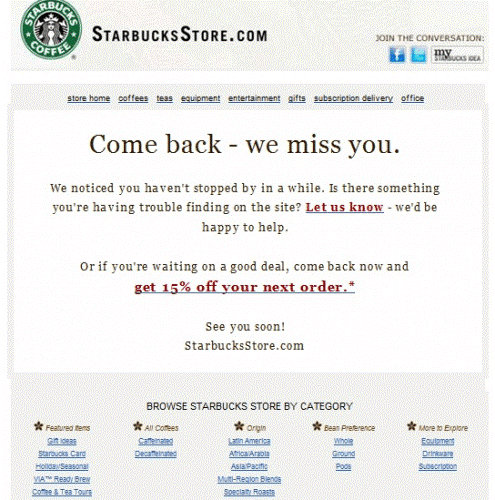
Image Source
7. Educate Instead of Sell
When creating your content for email marketing, your focus should be on creating content that educates rather than pushing a direct offer. When you first educate your prospect about your product or the problem it solves, your B2B buyer will be in a better buying position.
B2B purchases involve bigger investments, so the customers are careful about investing in the right product or service. This is why it is always good to inform them about the options they have and offer them more insights with the help of your email content.
Make sure to support your content with scientific research, credible references, case studies, etc. Also, focus on making your content more engaging for the readers as people like content that is appealing and riveting at the same time. When you create content that conveys your message creatively, your chances of becoming successful with your strategy increase manifolds.
8. Set your sending frequency and goals
There’s no fixed rule about how frequently a marketer should email the customers, but your subscribers are likely to get annoyed or unsubscribe altogether if you send too often.
The frequency of sending will depend on the type of business you have. For example, if you run a news website, you might choose to send daily updates to your subscribers, while other businesses would send updates to their users twice a month, so subscribers stay excited about their emails.
So, determine the right frequency of sending emails by observing your subscribers’ behavior and check the unsubscribe rates and CTR to adjust the frequency if needed.
9. Last but not the Least: Measure and Adjust
Once you are done creating an email marketing strategy for your B2B Company, you may think it’s enough. However, audience behavior doesn’t always remain the same, and several other factors can impact your email marketing performance, so revisit your plan and analyze to see where it can be improved.
You can perform a weekly, monthly, or even quarterly analysis of your email marketing techniques and see how they can be improved to enhance your results.
Don’t mess around with what is already working. But if you find a tactic that’s not performing well, then instead of completely scrapping it, check why it isn’t working and if it can be fixed with some changes.
Assessing your email marketing campaign and improving it from time to time is the key to being successful at your email marketing campaigns and get great results.
About Author:
Angelina Smith is a marketing consultant with 15 years of experience in the execution of marketing strategies. Currently, she heads the marketing department at sales data LLC, a renowned database company based out of Fremont, CA which offers customized and pre-built email marketing solutions to improve b2b sales leads for enterprises.

